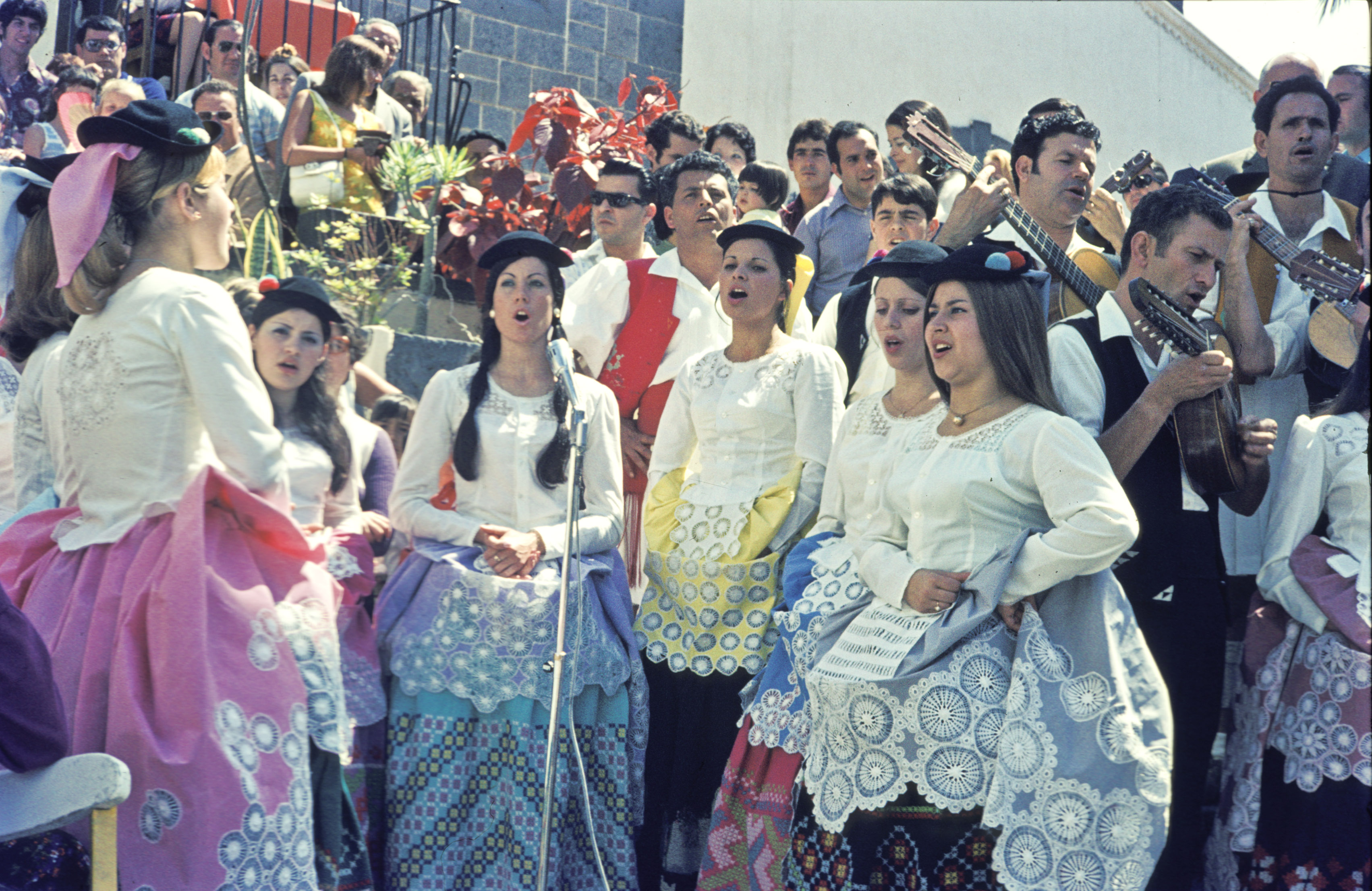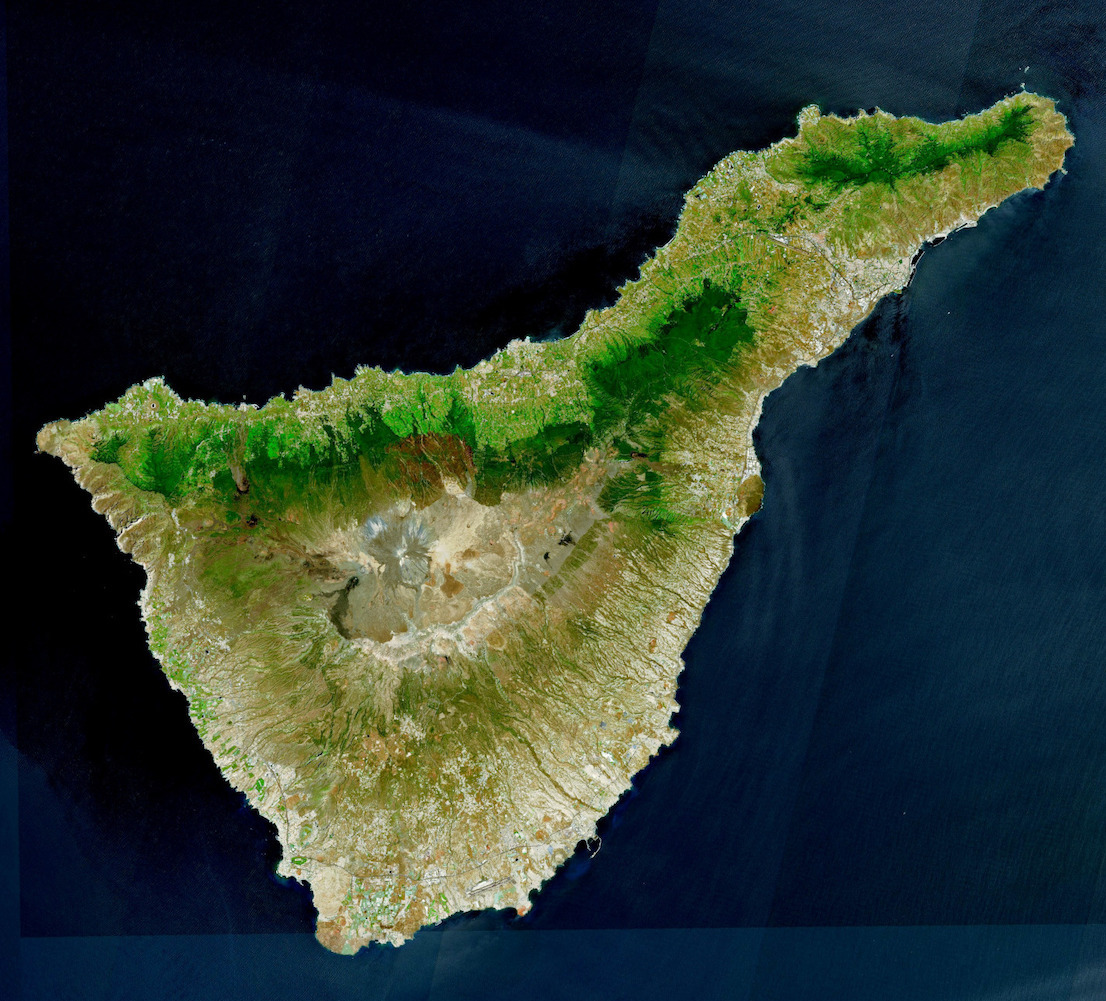|
Fuerteventura
Fuerteventura () is one of the Canary Islands, in the Atlantic Ocean, geographically part of Macaronesia, and politically part of Spain. It is located away from the coast of North Africa. The island was declared a biosphere reserve by UNESCO in 2009. Fuerteventura belongs to the Province of Las Palmas, one of the two provinces that form the autonomous community of the Canary Islands. The island's capital is Puerto del Rosario, where the Insule Council is found (the government of the island). Fuerteventura had 124,152 inhabitants (), the fourth largest population of the Canary Islands and the third of the province. At , it is the second largest of the Canary Islands, after Tenerife. From a geological point of view, Fuerteventura is the oldest island in the archipelago. Toponymy The island's name is a compound formed by the Spanish words ''fuerte'' (either "strong" or "fort") and ''ventura'' ("fortune"). Traditionally, Fuerteventura's name has incorrectly thought to have been a ... [...More Info...] [...Related Items...] OR: [Wikipedia] [Google] [Baidu] |
Canary Islands
The Canary Islands (; ) or Canaries are an archipelago in the Atlantic Ocean and the southernmost Autonomous communities of Spain, Autonomous Community of Spain. They are located in the northwest of Africa, with the closest point to the continent being 100 kilometres (62 miles) away. The islands have a population of 2.25 million people and are the most populous overseas Special member state territories and the European Union, special territory of the European Union. The seven main islands are from largest to smallest in area, Tenerife, Fuerteventura, Gran Canaria, Lanzarote, La Palma, La Gomera, and El Hierro. The only other populated island is Graciosa, Canary Islands, La Graciosa, which administratively is dependent on Lanzarote. The archipelago includes many smaller islands and islets, including Alegranza, Islote de Lobos, Isla de Lobos, Montaña Clara, Roque del Oeste, and Roque del Este. It includes a number of rocks, including Roque de Garachico, Garachico and Roques de ... [...More Info...] [...Related Items...] OR: [Wikipedia] [Google] [Baidu] |
Betancuria
Betancuria is a small town and a municipality in the western part of the island of Fuerteventura in the Province of Las Palmas, Canary Islands, Spain. The population is 811 (2013),Instituto Canario de Estadística , population and the area is . It is situated in a mountainous region, west of and southwest of the island capital Puerto del Rosario. By population it is the smallest municipality in Fuerteventura as well as all of the Canary Islands. Betancuria is named after |
Puerto Del Rosario
Puerto del Rosario () is a town and a municipality in the eastern part of the island of Fuerteventura in the Las Palmas province in the Canary Islands. It has been the capital of Fuerteventura since 1860. The town's population is 29,160 (2013),Instituto Canario de Estadística , population the administrative district's (municipio de Puerto del Rosario) population is 36,744 and its area is 289.95 km². History Originally known as Puerto de Cabras (Port of the Goats), Puerto del Rosario was initially of little political importance on the island, living in the shadow of the ancient capital Betancuria. It had long been a fishing settlement and benefited ...[...More Info...] [...Related Items...] OR: [Wikipedia] [Google] [Baidu] |
Lanzarote
Lanzarote (, , ) is a Spanish island, the easternmost of the Canary Islands, off the north coast of Africa and from the Iberian Peninsula. Covering , Lanzarote is the fourth-largest of the islands in the archipelago. With 163,230 inhabitants at the beginning of 2024, it is the third most populous Canary Island, after Tenerife and Gran Canaria. Located in the centre-west of the island is Timanfaya National Park, one of its main attractions. The island was declared a biosphere reserve by UNESCO in 1993. The island's capital is Arrecife, which lies on the eastern coastline. It is the smaller main island of the Province of Las Palmas. The first recorded name for the island, given by Italian-Majorcan cartographer Angelino Dulcert, was ''Insula de Lanzarotus Marocelus'', after the Genoa, Genoese navigator Lancelotto Malocello, from which the modern name is derived. The island's name in the native Guanche language was ''Tyterogaka'' or ''Tytheroygaka'', which may mean "one that ... [...More Info...] [...Related Items...] OR: [Wikipedia] [Google] [Baidu] |
Jandía Canton
Jandía is a peninsula in the southwestern part of the island of Fuerteventura in the Canary Islands. The peninsula is entirely in the municipality of Pájara. Within the peninsula is Fuerteventura's tallest mountain, Pico de Jandía or ''Pico de la Zarza'', that rises to an elevation of 807 m. Jandía is connected with the rest of Fuerteventura through the isthmus ''Istmo de la Pared''. Most of the peninsula has been a nature reserve (''Parque Natural de Jandía'') since 1987. pages 9716 and 9851-4 On the south and east coasts of Jandía there are the beach resorts Jandía Playa and |
Canary Islanders
Canary Islanders, or Canarians (), are the people of the Canary Islands, an Autonomous communities of Spain, autonomous community of Spain near the coast of Maghreb, Northwest Africa. The distinctive variety of the Spanish language spoken in the region is known as ''habla canaria'' (Canary speech) or the (''dialecto'')'' canario'' (Canarian Spanish, Canarian dialect). The Canarians, and their descendants, played a major role during the conquest, colonization, and eventual independence movements of various countries in Latin America. Their ethnic and cultural presence is most palpable in the countries of Uruguay, Venezuela, Cuba and the Dominican Republic as well as the Territories of the United States, US territory of Puerto Rico. History The original inhabitants of the Canary Islands are commonly known as Guanches (although this term in its strict sense only refers to the original inhabitants of Tenerife). They are most probably descendants of the Berbers of North Africa. Th ... [...More Info...] [...Related Items...] OR: [Wikipedia] [Google] [Baidu] |
Guanches
The Guanche were the Indigenous peoples, indigenous inhabitants of the Spain, Spanish Canary Islands, located in the Atlantic Ocean some to the west of modern Morocco and the North African coast. The islanders spoke the Guanche language, which is believed to have been related to the Berber languages of mainland North Africa; the language became extinct in the 17th century, soon after the islands were colonized. It is believed that the Guanche may have arrived at the archipelago some time in the 1st millennium BC, first millennium BC. The Guanche were the only indigenous people known to have lived in the Macaronesian archipelago region before the arrival of Europeans. There is no accepted evidence that the other Macaronesian archipelagos (the Cape Verde Islands, Madeira and the Azores) were inhabited. After the commencement of the Conquest of the Canary Islands, Spanish conquest of the Canaries, starting in the early 15th century, many natives were outright killed by the Spanish ... [...More Info...] [...Related Items...] OR: [Wikipedia] [Google] [Baidu] |
Jean De Béthencourt
Jean de Béthencourt (; 1362–1425) was a French explorer who in 1402 led an expedition to the Canary Islands, landing first on the north side of Lanzarote. From there he conquered for Castile the islands of Fuerteventura (1405) and El Hierro, ousting their local chieftains (''majos'' and ''bimbaches'', ancient peoples). Béthencourt received the title Lord of the Canary Islands ("Señor"), named himself King of the Canary Islands, but recognized King Henry III of Castile, who had provided aid during the conquest, as his overlord. Background The Canary Islands were apparently known to the Carthaginians of Cadiz. The Roman writer Pliny the Elder called them "the Fortunate Islands". Genoese navigator Lancelotto Malocello is credited with the rediscovery of the Canary Islands in 1312. In 1339, Majorcan Angelino Dulcert drew the first map of the Canaries, labeling one of the islands "Lanzarote". Life Jean de Béthencourt, Baron of Saint-Martin-le-Gaillard, was born in ... [...More Info...] [...Related Items...] OR: [Wikipedia] [Google] [Baidu] |
Tenerife
Tenerife ( ; ; formerly spelled ''Teneriffe'') is the largest and most populous island of the Canary Islands, an Autonomous communities of Spain, autonomous community of Spain. With a land area of and a population of 965,575 inhabitants as of April 2025, it is the most populous island in Spain and the entire Macaronesia region. Tenerife is also home to 42.7% of the total population of the archipelago. More than seven million tourists (7,384,707 in 2024) visit Tenerife each year, making it by far the most visited island in the archipelago. It is one of the most important tourist destinations in Spain and the world, hosting one of the world's largest carnivals, the Carnival of Santa Cruz de Tenerife. The capital of the island, , is also the seat of the island council (). That city and are the co-capitals of the Autonomous communities of Spain, autonomous community of the Canary Islands. The two cities are both home to governmental institutions, such as the offices of the preside ... [...More Info...] [...Related Items...] OR: [Wikipedia] [Google] [Baidu] |
Province Of Las Palmas
The Province of Las Palmas (, ; ) is a province (Spain), province of Spain, consisting of the eastern part of the autonomous communities of Spain, autonomous community of the Canary Islands. Las Palmas de Gran Canaria, capital city of this province and of the island of Gran Canaria, is the largest city in the Canary Islands. In 1927, the Province of Canary Islands was split into two provinces: Las Palmas and Province of Tenerife, Santa Cruz de Tenerife. In 1982, both provinces became part of the newly founded autonomous community of the Canary Islands. Geography Composition It consists of about half of the Atlantic Ocean, Atlantic archipelago, including the islands of Gran Canaria, Fuerteventura, and Lanzarote, as well as another six minor isles (Alegranza, Graciosa, Canary Islands, Graciosa, Montaña Clara, Lobos Island, Lobos, Roque del Este, and Roque del Oeste). Their total land area is , representing 54.6% of the Canary Islands' total land. (The other half of the arc ... [...More Info...] [...Related Items...] OR: [Wikipedia] [Google] [Baidu] |
Spain
Spain, or the Kingdom of Spain, is a country in Southern Europe, Southern and Western Europe with territories in North Africa. Featuring the Punta de Tarifa, southernmost point of continental Europe, it is the largest country in Southern Europe and the fourth-most populous European Union member state. Spanning across the majority of the Iberian Peninsula, its territory also includes the Canary Islands, in the Eastern Atlantic Ocean, the Balearic Islands, in the Western Mediterranean Sea, and the Autonomous communities of Spain#Autonomous cities, autonomous cities of Ceuta and Melilla, in mainland Africa. Peninsular Spain is bordered to the north by France, Andorra, and the Bay of Biscay; to the east and south by the Mediterranean Sea and Gibraltar; and to the west by Portugal and the Atlantic Ocean. Spain's capital and List of largest cities in Spain, largest city is Madrid, and other major List of metropolitan areas in Spain, urban areas include Barcelona, Valencia, Seville, ... [...More Info...] [...Related Items...] OR: [Wikipedia] [Google] [Baidu] |
Gadifer De La Salle
Gadifer de La Salle (Sainte-Radegonde, 1340 –1415) was a French knight and crusader of Poitevine origin who, with Jean de Béthencourt, conquered and explored the Canary Islands for the Kingdom of Castile. Life Gadifer de La Salle was born about 1350 into a family of minor nobility in Poitou. His father, Ferrand de La Salle. Gadifer served first under Philip I, Duke of Burgundy, and later as a member of the household of the Duke of Berry. Gadifer had won renown in the French campaigns against England during the Hundred Years' War (1337–1453). In 1378 the duke of Berry financed his travel to Prussia to take part in a crusading venture of the Teutonic Knights in Prussia. He served with Hospitallers in Rhodes, and was part of a delegation sent by Louis I, Duke of Anjou to the Republic of Venice. Their galleys were seized by the Republic of Ragusa, and it is likely that Louis paid Gadifer's ransom. [...More Info...] [...Related Items...] OR: [Wikipedia] [Google] [Baidu] |







